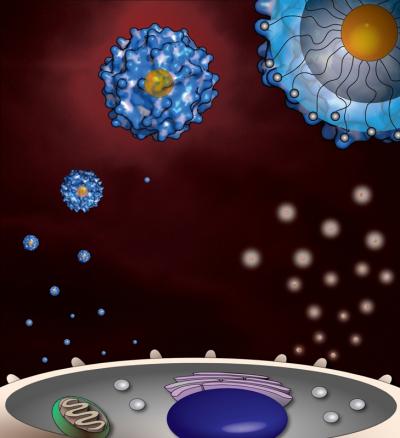Researchers from the Tel Aviv University and the University of Massachusetts at Amherst have developed a novel technique to introduce chemical residues in the immune system.
 "Gold particles modified with chemical residues interact with immune cells.Credit: Professor Vincent Rotello, University of Massachusetts at Amherst"
"Gold particles modified with chemical residues interact with immune cells.Credit: Professor Vincent Rotello, University of Massachusetts at Amherst"
The method helps to understand the properties that provoke immune cells. The study provides a better idea on the properties of bacteria and viruses, highly effective vaccines and medicines, and improved drug delivery mechanisms.
The research team performed both in vivo and in vitro experiments using immune cells from mouse. The researchers used gold nanoparticles measuring 2 nm in diameter for the study. Various chemical residues were applied to the tiny gold nanoparticles to explore the immune response. It was observed that the immune system responded only to water-resistant chemical residues, which illustrated the connectivity between the hydrophobic nature and the immune system’s reaction.
According to Dr. Dan Peer, Head, Laboratory of Nanomedicine, Tel Aviv University, the hydrophobic region on the cell membrane are exposed during a cell death and the immune system recognizes the damage to the cell and alerts the nearby cells. He added that the same principle was followed for nanoparticles. Higher immune response is observed when the particles are more hydrophobic in nature.
Furthermore, Dr. Peer stated that the new method was developed based on the “Danger Model” theory explained by Prof. Polly Matzinger. According to the theory, the membrane of the damaged cell interacts with the immune system to activate the immune system.
The researchers will study different damaged cell, viral and bacterial cells in future and develop gold nanoparticles similar to the foreign particles to better understand the mechanism of the immune system.
The paper was published in the Journal of the American Chemical Society.